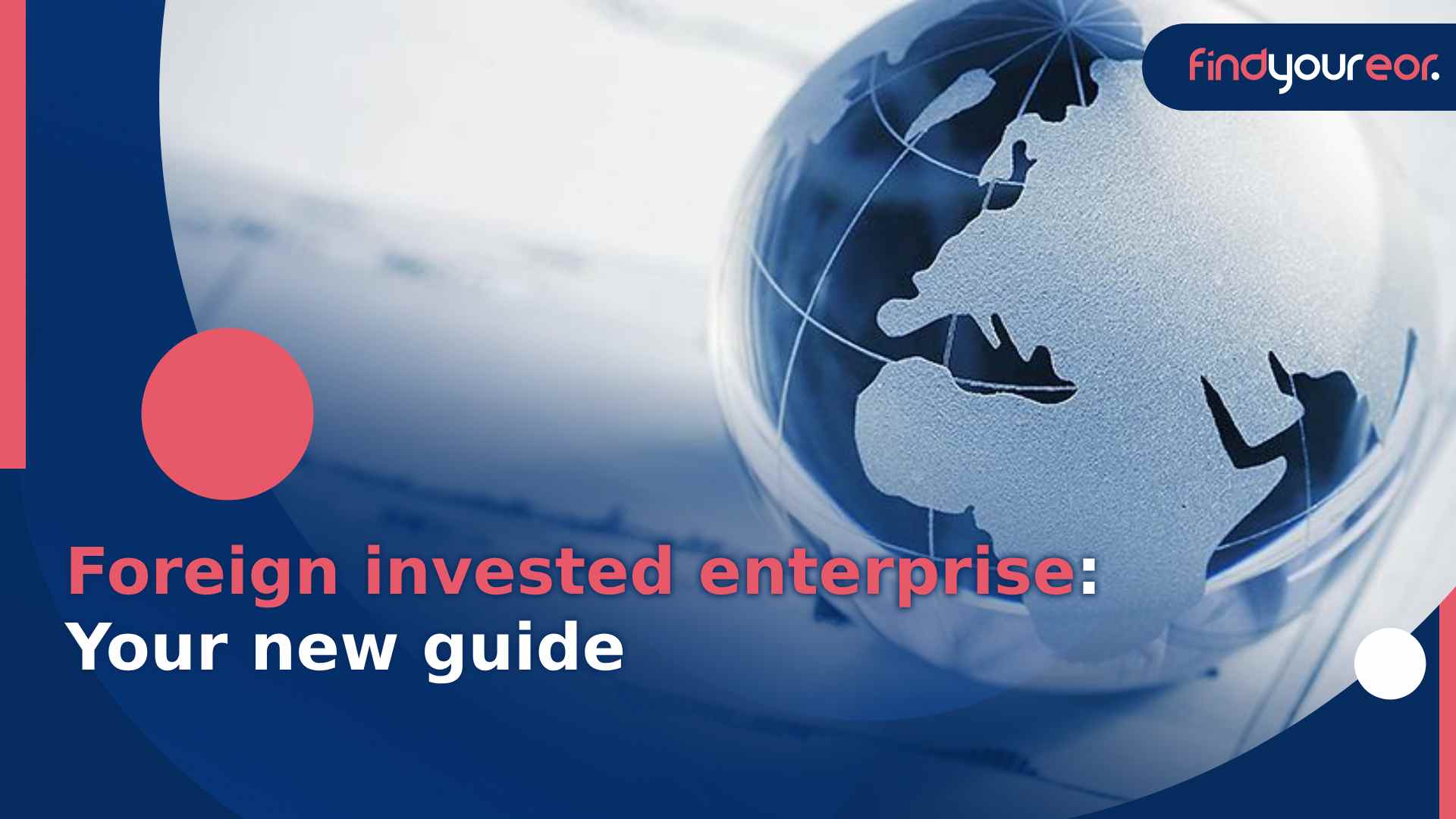A Deep Dive Into Companies Expanding Internationally: Strategies, Challenges, And Success Stories
Last update: December 27th 2023
In the dynamic landscape of global business, companies expanding internationally embark on a journey marked by intricate strategies, formidable challenges, and inspiring success stories. This exploration delves into the core aspects of international expansion, providing an essential guide for those navigating the complexities of entering the global arena.
In this article, we explore the intricacies of international expansion, serving as a comprehensive guide for companies venturing into the global arena. If you have been interested in topics like Contract Staffing, you will surely enjoy this. Keep reading!
Understanding International Expansion
Learn all the information about the companies expanding internationally:
What is International Expansion?
International expansion is the strategic initiative undertaken by companies expanding internationally to extend their operations beyond domestic borders. So, it involves entering new markets, often in different countries, to capitalize on opportunities, foster growth, and diversify revenue streams.
Therefore, this intricate process is not limited to a single approach; instead, it encompasses various strategies, such as mergers and acquisitions, joint ventures, franchising, and organic growth. Each avenue presents unique challenges and opportunities, making the understanding of international expansion crucial for businesses aiming to thrive in a globalized world.
The heart of international expansion lies in exploring untapped markets, understanding diverse consumer behaviors, and adapting business models to suit the unique characteristics of each target market. Also, the ultimate goal is not merely geographical expansion but establishing a sustainable and lucrative presence in new territories.
Why do Companies Choose to Expand Internationally?
Companies embark on the journey of international expansion for multifaceted reasons that align with their overarching business objectives. Consequently, companies expanding internationally are driven by a strategic vision, seeking to overcome domestic limitations and explore new horizons.
· Strategic Growth. One of the primary motivations behind international expansion is the pursuit of strategic growth. Therefore, businesses recognize that saturating domestic markets may hinder their potential for further expansion. By venturing into international markets, they open avenues for increased market share, revenue diversification, and long-term sustainability.
· Diversification of Revenue Streams. Diversification serves as a risk mitigation strategy. Companies expanding internationally aim to reduce dependency on a single market or product, safeguarding themselves against economic downturns or fluctuations in specific industries. So, a diversified portfolio enhances resilience and provides a buffer against unforeseen challenges.
· Access to Untapped Markets. New markets offer untapped potential that may align seamlessly with a company's products or services. Companies expanding internationally seek to tap into regions where there is a demand for their offerings, gaining a competitive advantage by being pioneers or early entrants in these markets.
· Capitalizing on Global Talent. For this reason, international expansion provides access to a global pool of talent. Companies can benefit from diverse skill sets, perspectives, and experiences, fostering innovation and adaptability within the organization. A global workforce can enhance creativity and problem-solving capabilities.
· Competitive Edge. In an increasingly globalized business landscape, companies expanding internationally gain a competitive edge. So, they position themselves as industry leaders, demonstrate adaptability, and showcase their ability to thrive in diverse environments.
· Access to Resources. Certain regions may offer access to specific resources, be it raw materials, advanced technologies, or unique capabilities. Companies expanding internationally strategically choose locations that provide a competitive advantage in terms of resources, enabling them to enhance production efficiency or introduce innovative solutions.
Key Strategies for Successful International Expansion
Discover all the information about the companies expanding internationally:
Analyzing International Expansion Strategies
In the realm of global business, having a robust set of strategies is imperative for companies expanding internationally. Therefore, analyzing these international expansion strategies unveils a spectrum of approaches that businesses employ to navigate the complexities of diverse markets and emerge victorious.
· Diversification through Mergers and Acquisitions. One prominent strategy in the arsenal of international expansion is mergers and acquisitions. Companies strategically acquire or merge with existing entities in the target market, leveraging established infrastructure, market share, and local expertise. Moreover, this approach accelerates market entry, mitigates risks, and fosters rapid growth.
· Strategic Alliances and Joint Ventures. Collaborative efforts, such as strategic alliances and joint ventures, are key facets of successful international expansion. By partnering with local businesses or entering joint ventures, companies expanding internationally gain access to local insights, distribution networks, and established customer bases. These partnerships facilitate a smoother entry into the market and enhance adaptability.
· Franchising as a Scalability Tool. Franchising serves as a scalable model for international expansion. Also, businesses can replicate their successful model by allowing local entrepreneurs to operate under their brand. To clarify, this not only minimizes the financial burden on the parent company but also ensures a localized approach, catering to the unique preferences of each market.
· Organic Growth and Greenfield Investments. Opting for organic growth through greenfield investments involves establishing a new presence from the ground up. While this approach demands substantial time and resources, it allows companies expanding internationally to have complete control over operations, strategy, and brand positioning in the new market.
Factors to Consider when Choosing an Expansion Strategy
Here are the main factors about the companies expanding internationally:
· Market Research and Entry Assessment. Thorough market research is the cornerstone of choosing the right expansion strategy. Understanding the nuances of the target market, including cultural preferences, competitive landscapes, and regulatory frameworks, is paramount. That is to say, global market entry requires a nuanced understanding of the unique challenges and opportunities each market presents.
· Financial Feasibility and Resource Allocation. The financial viability of an expansion strategy is a critical consideration. Companies expanding internationally must assess the costs involved, including initial investments, operational expenses, and potential returns. Allocating resources efficiently ensures a sustainable approach and guards against unforeseen financial challenges.
· Adaptability and Cultural Sensitivity. Cultural nuances play a pivotal role in the success of international expansion. An expansion strategy should be adaptable and culturally sensitive, aligning the business model with the values and expectations of the local population. Consequently, failure to acknowledge and respect cultural differences can hinder market acceptance.
· Regulatory Compliance and Risk Mitigation. Navigating diverse regulatory environments is a challenge in international expansion. A successful strategy includes a thorough understanding of local regulations, legal requirements, and compliance standards. Implementing effective risk mitigation strategies safeguards companies expanding internationally against legal and operational challenges.
· Operational Scalability and Flexibility. Scalability and flexibility are integral to a successful international expansion strategy. The chosen approach should allow for scalable operations to accommodate growth. Additionally, flexibility in adapting strategies based on market feedback and changing conditions ensures resilience in the face of unforeseen challenges.
· Strategic Alignment with Corporate Goals. The chosen expansion strategy must align with the overarching corporate goals and long-term vision of the company. So, a well-aligned strategy ensures that international expansion contributes positively to the overall objectives of companies expanding internationally.
Global Market Entry: Taking the First Steps
Here are the main steps:
Understanding Global Market Entry
When companies expanding internationally embark on the journey of global market entry, the initial steps are crucial, demanding a profound understanding of the intricate dynamics inherent in diverse markets.
Choosing the Right Market
Firstly, choosing the right market is pivotal. Thorough market analysis is essential for identifying regions where demand aligns with the company's offerings. Factors such as market size, growth potential, competition, and regulatory considerations should be meticulously assessed.
However, simply identifying a lucrative market is not sufficient. Companies expanding internationally must delve deeper, evaluating the cultural, economic, and social nuances that influence consumer behavior. Therefore, this in-depth understanding ensures that the chosen market aligns seamlessly with the company's products or services.
Moreover, the selection process involves strategic foresight. Companies expanding internationally need to anticipate market trends, technological advancements, and emerging opportunities to position themselves ahead of the competition. In other words, foresight is the compass that guides decision-making in the intricate landscape of global market entry.
Setting up Operational Structures
Having chosen the right market, the subsequent step in global market entry is setting up robust operational structures. This involves a meticulous orchestration of various elements, each contributing to the seamless integration of the business into the new market.
Consequently, a key consideration is adapting operational structures to local business practices and regulatory requirements. Companies need to navigate the intricacies of international legal frameworks, taxation, and compliance standards. So, this adaptability is crucial for avoiding potential pitfalls and ensuring a smooth entry into the chosen market.
Moreover, establishing effective supply chain management is a linchpin in global market entry. Companies expanding internationally should ensure a streamlined flow of goods or services, minimizing disruptions and optimizing efficiency. This requires forging partnerships with local suppliers, distributors, and logistics providers.
To reinforce operational structures, technological integration becomes imperative. Leveraging cutting-edge technologies facilitates communication, data management, and market analysis. Companies expanding internationally need to invest in scalable and adaptable technology solutions that empower them to stay agile in a rapidly evolving global business landscape.
Navigating the Challenges of International Expansion
Pay attention for this information:
Identifying Common Obstacles in International Expansion
When companies expanding internationally set sail on the journey of global expansion, they inevitably encounter a spectrum of challenges. So, identifying these common obstacles is the first step in navigating the complex terrain of international markets.
However, a significant challenge lies in cultural differences. Companies expanding internationally often grapple with understanding and adapting to diverse cultural nuances. This hurdle manifests in marketing strategies, communication styles, and even product localization. Bridging this cultural gap requires a nuanced approach and cultural intelligence.
In addition, regulatory complexities pose a formidable challenge. Navigating the intricate web of international laws, trade regulations, and compliance standards demands meticulous attention. Companies expanding internationally must establish a robust legal framework, staying abreast of changes in legislation to avoid legal entanglements that could impede their progress.
So, currency fluctuations emerge as a constant concern. The volatility of exchange rates can impact pricing strategies, profit margins, and overall financial stability. To clarify, mitigating this challenge requires strategic financial planning, including the use of hedging mechanisms to safeguard against adverse currency movements.
Strategies to Overcome Expansion Challenges
To overcome cultural differences, fostering a culturally agile organizational culture is imperative. Also, this involves not only cultural training for employees but also incorporating diverse perspectives into decision-making processes. Companies expanding internationally should embrace diversity as a strength rather than a challenge, leveraging it for innovation and adaptability.
In response to regulatory complexities, developing a comprehensive understanding of local regulations and fostering strong relationships with legal experts is paramount. Proactive compliance measures and regular updates on regulatory changes ensure that companies expanding internationally operate within the bounds of the law, minimizing legal risks.
To address currency fluctuations, implementing robust financial strategies is essential. This includes using financial instruments such as forward contracts or options to hedge against currency risks. Companies expanding internationally must work closely with financial experts to devise strategies that align with their specific business model and risk tolerance.
Establishing strong local partnerships can significantly mitigate challenges related to market knowledge and entry barriers. Collaborating with local businesses provides companies expanding internationally with insights into the local market dynamics, consumer behavior, and effective distribution channels.
Additionally, investing in advanced technologies can streamline operations and enhance adaptability. So, cloud-based solutions, data analytics, and digital communication platforms empower companies expanding internationally to overcome logistical challenges, facilitate remote collaboration, and optimize supply chain management.
Making the Leap: International Expansion Success Stories
Here are different success stories:
Case Study 1: TechInnovate Solutions
Learn about TechInnovate Solutions:
Strategy Used by the Company
TechInnovate Solutions, a burgeoning technology firm based in Silicon Valley, pursued a targeted strategy for its international expansion. Recognizing the growing demand for artificial intelligence solutions in the European market, TechInnovate chose to establish a wholly-owned subsidiary in Germany. This strategy allowed the company to have complete control over operations, ensuring alignment with its corporate ethos and innovation-driven approach.
The strategy focused on local talent acquisition, fostering collaborations with German universities and tech communities. By tapping into the expertise of local talent, TechInnovate Solutions aimed to adapt its AI solutions to the specific needs of the German market while benefiting from the rich pool of skilled professionals.
Results of the Expansion
As a result, TechInnovate Solutions not only successfully penetrated the German market but also became a key player in the European AI landscape. Therefore, the localized approach resonated with German businesses, leading to increased adoption of TechInnovate's solutions. The expansion significantly boosted the company's revenue, establishing a strong foothold in a competitive market.
Case Study 2: GreenHarvest Organics
Here is the Case 2:
Strategy Used by the Company
GreenHarvest Organics, an eco-conscious agriculture company, undertook a unique strategy for its international expansion. Identifying Southeast Asia as a region with a rising awareness of organic farming, GreenHarvest decided to form strategic partnerships with local farming cooperatives in Thailand and Vietnam.
The strategy involved knowledge exchange and training, where GreenHarvest shared sustainable farming practices while learning from the local expertise. This collaborative approach aimed to ensure the production of high-quality organic crops while respecting local agricultural traditions.
Results of the Expansion
The collaborative strategy bore fruit, with GreenHarvest Organics establishing a reputation for premium organic produce in Southeast Asia. Local partnerships not only facilitated smooth market entry but also contributed to the sustainable growth of local farming communities. GreenHarvest's commitment to eco-friendly practices resonated with environmentally conscious consumers, leading to increased demand and market share.
Frequently Asked Questions
Why do companies expand internationally?
Companies embark on international expansion for diverse reasons. Firstly, seeking new markets and customers beyond domestic boundaries is a strategic move to fuel growth. International expansion strategies are often driven by the pursuit of increased market share and revenue diversification. Companies recognize the need to transcend local limitations and tap into global opportunities to ensure long-term sustainability and competitiveness.
Moreover, international expansion serves as a risk mitigation strategy. Challenges of international expansion notwithstanding, companies benefit from diversifying their operations across multiple markets. This shields them from economic downturns or fluctuations specific to one region. International expansion success stories often feature companies that strategically expanded to mitigate risks and strengthen their overall business resilience.
What is an example of a business expanding internationally?
A notable example of a business successfully expanding internationally is TechGlobe Solutions. Recognizing the saturation in the domestic market, TechGlobe employed global market entry strategies by establishing subsidiaries in key European countries.
Therefore, this move allowed the company to access a broader customer base, adapt its products to regional preferences, and ultimately achieve sustained growth. TechGlobe's international expansion exemplifies the benefits of strategic market diversification.
What are the five benefits for companies of expanding internationally?
The five benefits of international expansion are:
1. Market Diversification. International expansion enables companies to diversify their markets, reducing dependency on a single region and enhancing overall market resilience.
2. Revenue Growth. Access to new markets means access to new customers. Companies expanding internationally can significantly increase their revenue streams by tapping into the purchasing power of diverse consumer bases.
3. Global Talent Pool. International expansion facilitates access to a global talent pool. Companies can attract diverse skill sets, fostering innovation and adaptability within the organization.
4. Competitive Advantage. In a globalized landscape, benefits of international expansion include gaining a competitive edge. Companies that expand internationally position themselves as industry leaders, showcasing adaptability and a capacity to thrive in diverse environments.
5. Access to Resources. So, certain regions may offer unique resources, from raw materials to advanced technologies. International expansion allows companies to strategically choose locations that provide a competitive advantage.
What are the four ways a company can expand internationally?
The four ways are:
1. Mergers and Acquisitions. Consequently, companies can expand internationally by acquiring or merging with existing entities in the target market. This strategy provides access to established infrastructure and market share.
2. Strategic Alliances and Joint Ventures. Collaborative efforts with local businesses through alliances or joint ventures facilitate smoother market entry. This approach leverages local expertise and networks.
3. Franchising. Also, a scalable model for international expansion, franchising allows companies to replicate successful business models through partnerships with local entrepreneurs.
4. Organic Growth and Greenfield Investments. Companies can opt for organic growth by establishing a new presence from the ground up. While resource-intensive, this approach offers complete control over operations.
In conclusion, international expansion is a strategic move that demands meticulous planning, adaptation to diverse markets, and resilience in overcoming challenges for different countries.
For companies seeking a smooth and compliant international expansion journey, hiring an EOR is the best alternative. Find the perfect one with us now!


















.jpg)




















